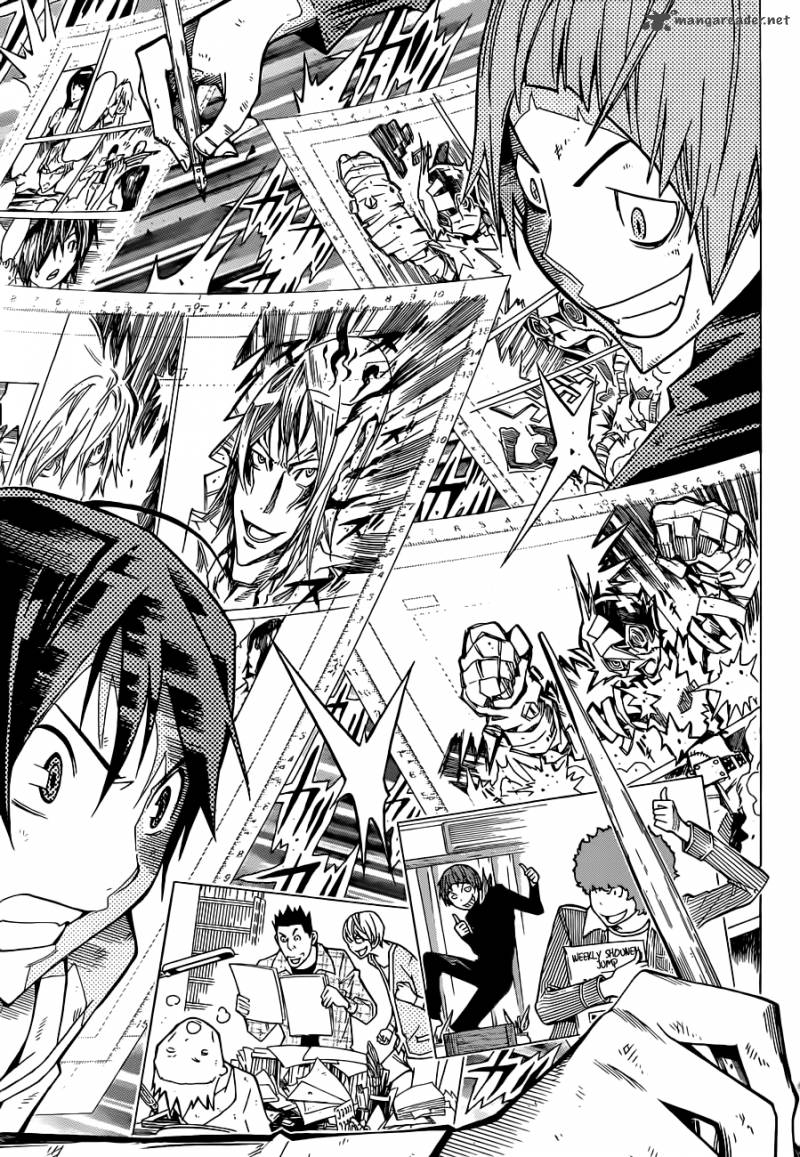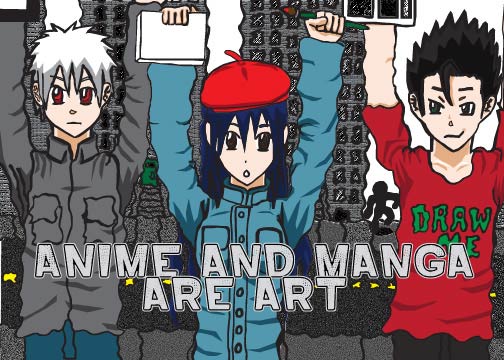
This website was made to introduce Japanese media; more like anime and manga; to people who don't watch and read the genre. Also targeted to the average movie goer because these people probably watch superhero movies like Avengers and Spiderman which also originated from comic books and cartoons. This website also explains why I believe these categories are works of art.
From my point of view I consider these media works of art due to the process of production. In the process of making these media for consumers is comparably to the art-making process. Anime follows the typical production of animation, including storyboarding, voice acting, character design, and cel production (Shirobako, itself a series, highlights many of the aspects involved in anime production). Since the 1990s, animators have increasingly used computer animation to improve the efficiency of the production process. Artists like Noburō Ōfuji pioneered the earliest anime works, which were experimental and consisted of images drawn on blackboards, stop motion animation of paper cutouts, and silhouette animation. Cel animation grew in popularity until it came to dominate the medium. In the 21st century, the use of other animation techniques is mostly limited to independent short films, including the stop motion puppet animation work produced by Tadahito Mochinaga, Kihachirō Kawamoto and Tomoyasu Murata. Computers were integrated into the animation process in the 1990s, with works such as Ghost in the Shell and Princess Mononoke mixing cel animation with computer-generated images. Fuji Film, a major cel production company, announced it would stop cel production, producing an industry panic to procure cel imports and hastening the switch to digital processes.
Prior to the digital era, anime was produced with traditional animation methods using a pose to pose approach.[53] The majority of mainstream anime uses fewer expressive key frames and more in-between animation.
Japanese animation studios were pioneers of many limited animation techniques, and have given anime a distinct set of conventions. Unlike Disney animation, where the emphasis is on the movement, anime emphasizes the art quality and let limited animation techniques make up for the lack of time spent on movement. Such techniques are often used not only to meet deadlines but also as artistic devices. Anime scenes place emphasis on achieving three-dimensional views, and backgrounds are instrumental in creating the atmosphere of the work. The backgrounds are not always invented and are occasionally based on real locations, as exemplified in Howl's Moving Castle and The Melancholy of Haruhi Suzumiya. Oppliger stated that anime is one of the rare mediums where putting together an all-star cast usually comes out looking "tremendously impressive".
The cinematic effects of anime differentiates itself from the stage plays found in American animation. Anime is cinematically shot as if by camera, including panning, zooming, distance and angle shots to more complex dynamic shots that would be difficult to produce in reality. In anime, the animation is produced before the voice acting, contrary to American animation which does the voice acting first; this can cause lip sync errors in the Japanese version.
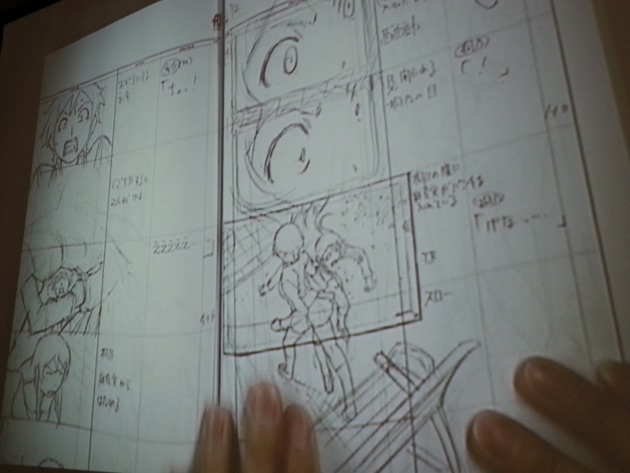
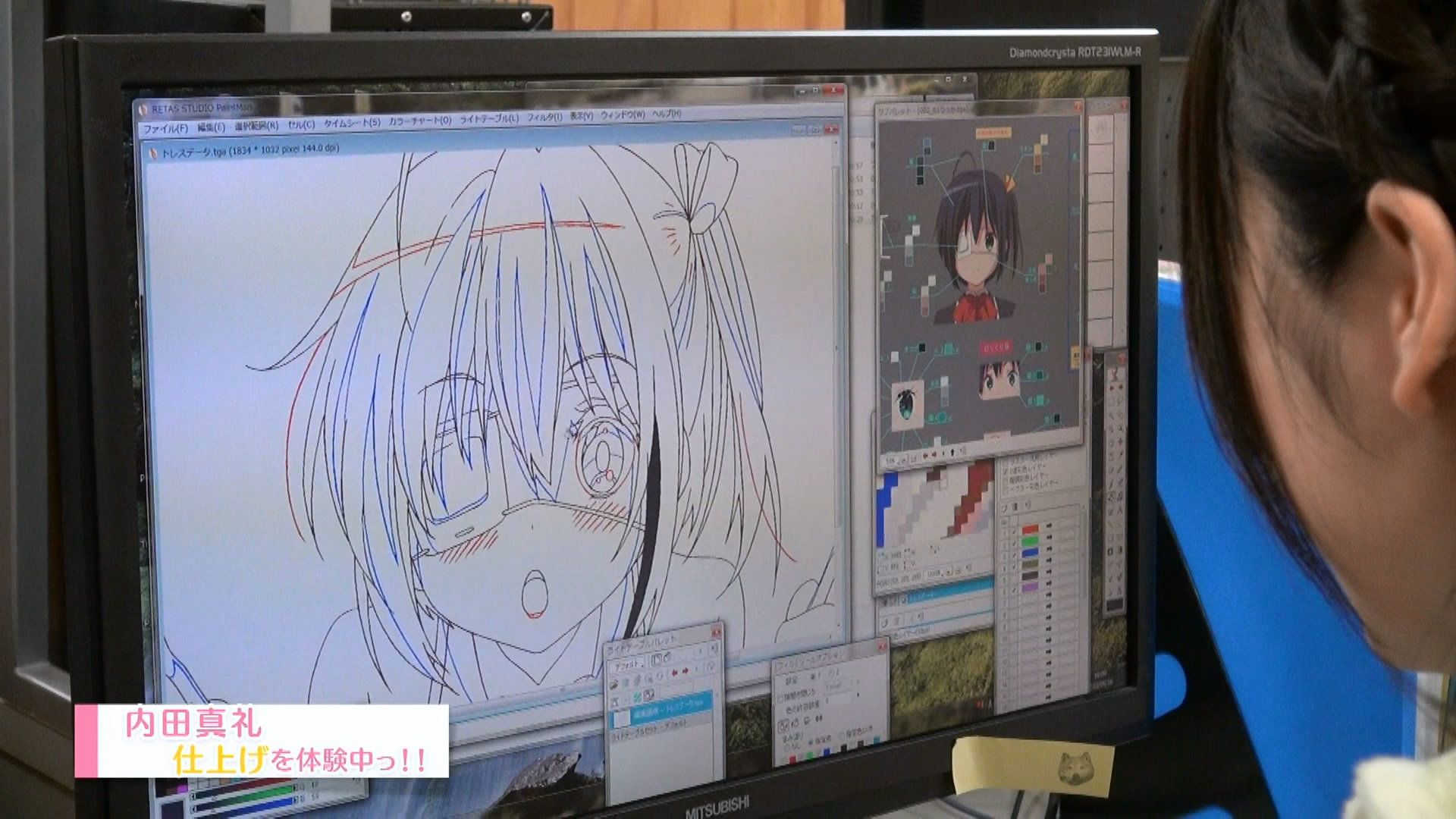
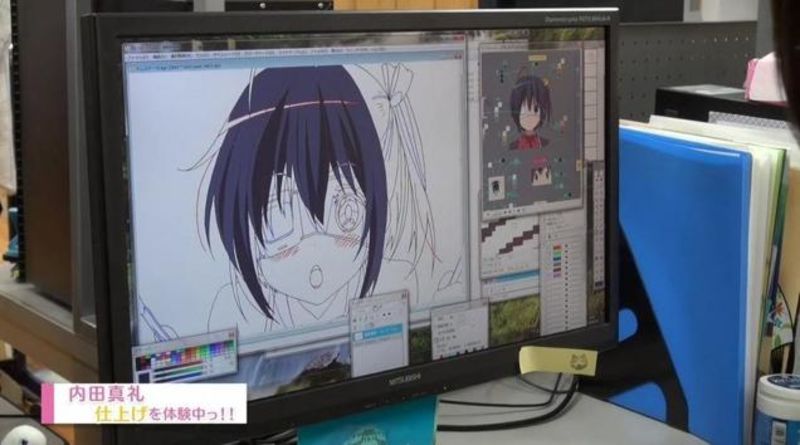
Manga follows a similar process of production excluding the voice acting process. Manga has the similar production process as book production. There are several expressive techniques typical (and some of them unique) to the manga art form:
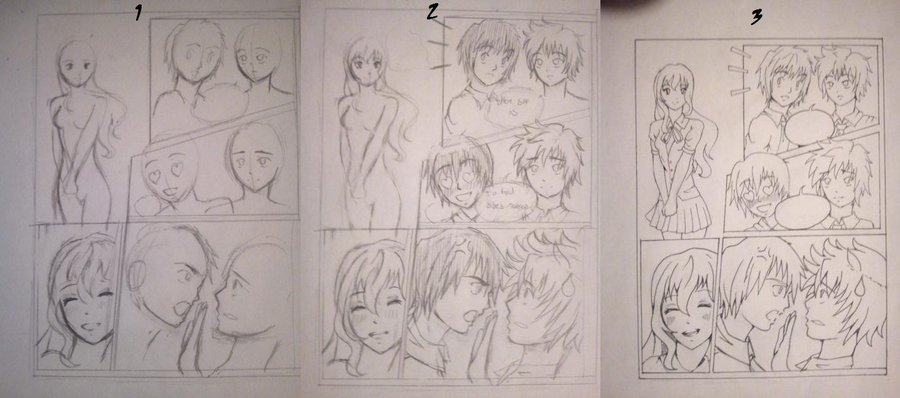
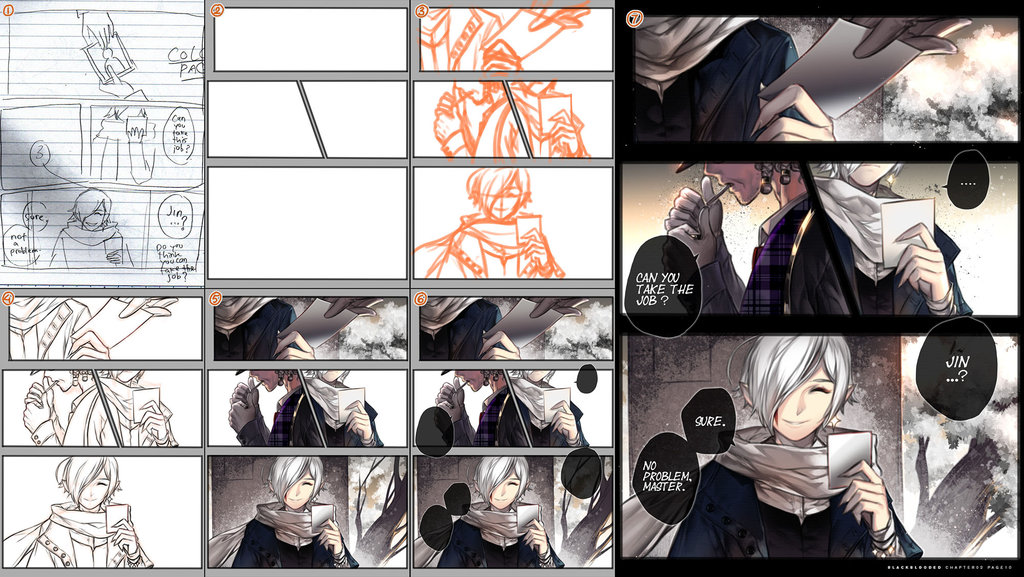
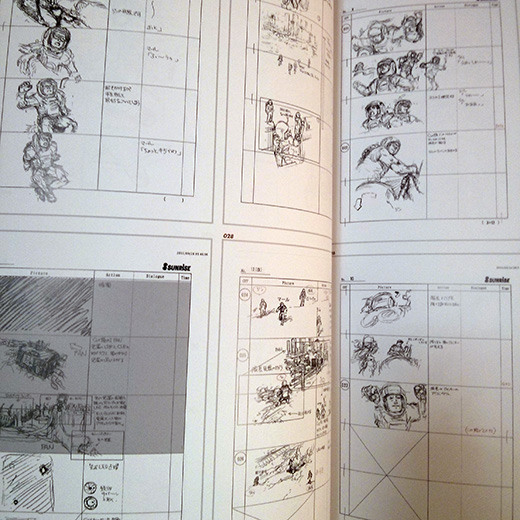
To learn more about the manga making process I suggest you either read or watch the series Bakuman. Though the series dramatize the process it still reflects the industry very similiarly.

